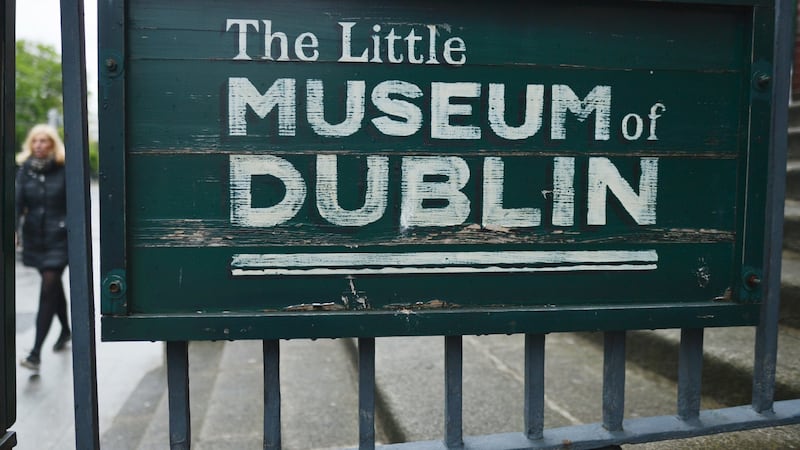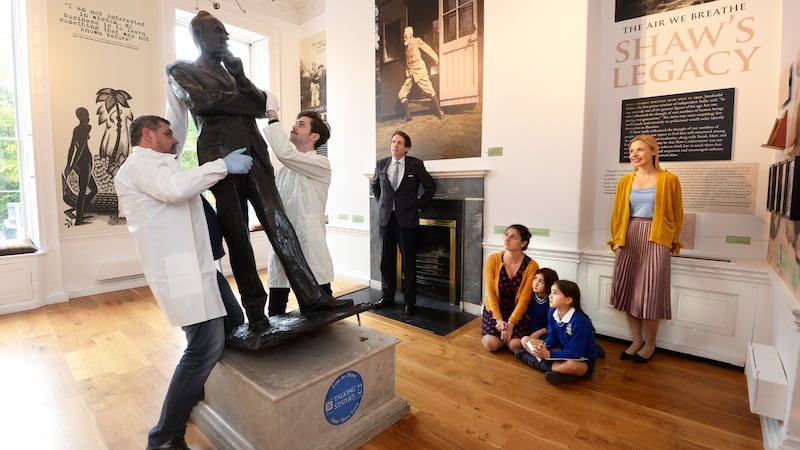Tourism is part of the Irish condition
In 2019, more than 11 million people visited Ireland, generating revenue of €5.9 billion. Cultural attractions are among the many businesses that depend on a constant flow of holidaymakers. While Covid-19 has been a most unwelcome visitor, reports of Dublin's demise are premature, and at least more Irish people now recognise the importance of tourism in our culture. Welcoming visitors is not just our largest indigenous industry and a legitimate source of pride. It is part of who we are.
Irish history has never been so fashionable
The Decade of Centenaries has helped to make history a subject of mass fascination. Here in the capital, historians such as David Dickson and Padraig Yeates have ignited public interest in the story of Dublin, which is now the subject of fine books, programmes, podcasts and walking tours.
The State supports many of our leading cultural institutions, from the National Museum and Imma to small-scale pleasures like Marsh’s Library and 14 Henrietta Street. Meanwhile, DNA testing services such as 23andMe enable people to explore their ancestry in amazing new ways. This may not be a golden age in Irish history, but it is certainly a golden age for Irish history.
A museum does not build itself
The Little Museum occupies a house on St Stephen's Green that is owned by our patrons in Dublin City Council. In 2012, we had 24,192 visitors. We thought this was a good result. In 2019, the figure was 120,993. Ordinary citizens are responsible for the success of the institution, because our collection was created by public donation. Philanthropists, patrons and the Irish government have also been generous supporters. The result is a people's museum of the capital, created by public goodwill and managed in trust by a registered charity.

Museums are part of the entertainment industry
Museums were once temples of culture, with their own esoteric conventions. They are now a branch of the entertainment industry, competing for attention with sport, movies and shopping centres. We have the power to create social dialogue, foster learning and tackle inequality. But first we have to keep you awake.
In the media, there is a shift from lecture to conversation, as newspapers vie to keep up with the digital revolution. Museums are undergoing a similar transition. Sometimes it’s painful to watch (“This artefact is not working, we apologise for any incontinence”). Adapt or die is bracing advice for conservative institutions.
We need bigger visitor attractions
Fáilte Ireland will invest €24 million to develop large-scale visitor attractions in the next three to seven years. Mass-market attractions are massive drivers of revenue within a host economy, because people fly from other countries to visit them. Put another way: without the Guinness Storehouse, there may not be a Little Museum. At the moment, only one of us brings thousands of people to Dublin every year.
Small things can tell big stories
Dublin is Europe's biggest village. And that intimacy is part of its charm. The Little Museum uses small things to tell big stories, such as the shutter with a bullethole from the Easter Rising, or the letter from 20-year-old James Joyce, asking Lady Gregory for money. I like the autograph book from Jammet's restaurant – here is the Dublin of Roy Foster's Vivid Faces – but some of the highlights are more commonplace. My favourite artefact at the moment is a collection of tennis balls discarded by the dogs of Dún Laoghaire.
We do not work for learned historians
The average reading age for museum captions is 12 years old. Ireland is lucky to have so many great historians, but our default audience is not Diarmaid Ferriter. It's Sammy from Southampton. Sammy would rather be shopping, at the hairdressers or in the pub. But today Sammy is in your museum. How you will keep him absorbed is the essential question.
Traditionally, the challenge for museum professionals was to covet critical approval. Today, it is to privilege the people who don’t want to be in our museums by giving them hundreds of cues to have a richly rewarding experience. Again: adapt or die.

Mischief is part of the job
One of our challenges is to make people look at themselves anew. This requires an eclectic spirit. We are inspired by the hospitality of five-star hotels as well as Dublin's world-class theatre scene, which mines history for moments of peerless drama. Two directors, Louise Lowe and Selina Cartmell, have changed the way I see the theatre and the museum.
I also admire the playfulness of artists such as Hannah Gadsby and Tino Sehgal. Gadsby's Netflix special, Nanette, brought stand-up comedy into startling new territory, while Sehgal makes art that interrogates the gulf between the material and non-material. In one show he recruited people to walk around saying, "Ooh, this is so contemporary."
Don’t be surprised if you find yourself singing to a roomful of strangers in the Little Museum. Mischief and open-mindedness are preconditions for running a museum that sometimes feels more like a laboratory of history, hospitality and performance.
Museums are like powerful torches
Museums are a tool for revealing the unlit chambers of the past. They enable a society to explore its complex shared history. I am thinking of Mary Merritt, who spent 14 years in High Park Magdalene laundry in Drumcondra. In 2018, Mary was denied the apology she requested from the pope. Later that year, she told her story in a theatrical installation in the Little Museum. A tremendous advocate for justice, and the most unconquerable person I have ever met, Mary deserves the Freedom of Dublin.
In 2022, National Museums NI will present some treasures from their collection in the Little Museum. The working title for the exhibition is “You say you love me but you don’t even know me”.
Civic pride is good for business
Civic pride is the amount of affection that a place has for itself. And it pays. On St Stephen's Green, we are hand-making a world-class museum that personifies the hospitality, friendliness and good conversation of the Irish capital. The Little Museum is Dublin, bottled. Our work is about building civic pride; documenting the past; making guests feel welcome; kindling memories, tears and laughter; and, ultimately, bringing people to a closer understanding of who they really are.










